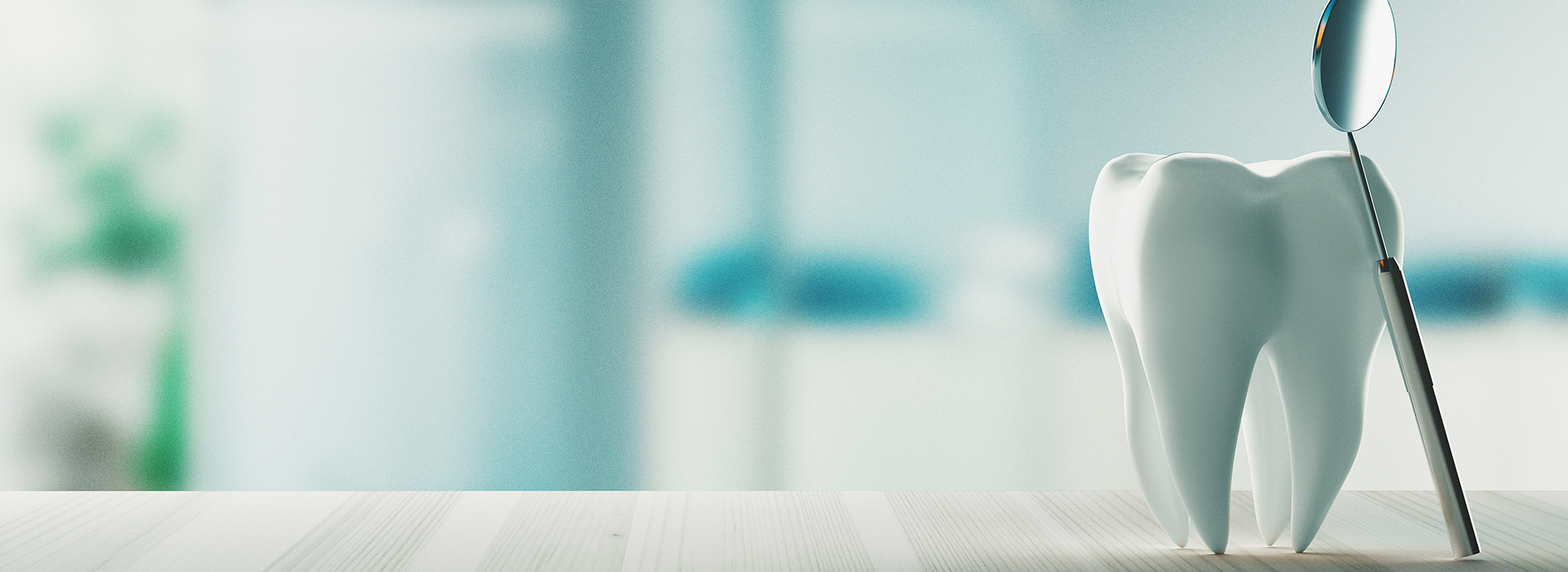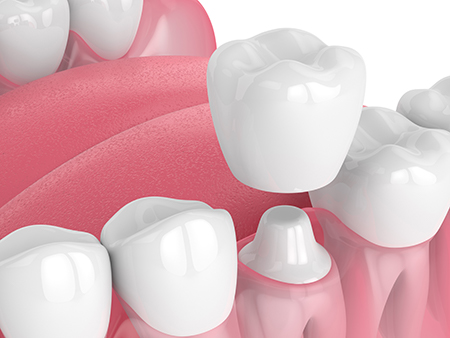
At the office of Fay Hu General Dentistry, we combine modern materials and careful clinical planning to restore teeth that are broken, weakened, or cosmetically compromised. Our approach emphasizes durable function and natural-looking aesthetics so that a restored tooth feels and appears like an integral part of your smile.
Teeth are remarkably strong, but years of decay, large fillings, root canal treatment, or grinding can leave a tooth vulnerable to fracture or further breakdown. In many of these situations, a filling is not sufficient to rebuild the tooth’s strength or shape—this is when a full-coverage restoration, commonly called a crown, becomes the preferred option.
Advances in dental ceramics now make it possible to restore teeth with metal-free crowns that are both resilient and lifelike. These all-ceramic crowns offer excellent biocompatibility, strong wear characteristics, and a natural translucency that blends seamlessly with surrounding teeth.
A crown covers the entire visible portion of a tooth above the gumline, restoring its form and function. Dentists consider crowns when a tooth has lost too much structure for a conventional filling to provide reliable protection. Crowns are also used after root canal therapy, when replacing large or fractured restorations, and when a tooth must serve as an anchor for a bridge or implant restoration.
Common scenarios that lead to crown treatment include extensive decay that compromises structural integrity, a tooth with multiple or very large fillings, a fractured cusp, or a tooth that no longer responds predictably to conservative restorations. Crowns can also correct aesthetic concerns such as misshapen or stained teeth that do not respond to whitening.
Your dentist will evaluate the tooth’s remaining structure, the forces it will be subjected to in your bite, and your cosmetic goals before recommending a crown. This ensures the restoration addresses both functional needs and appearance, rather than applying a one-size-fits-all solution.
Where appropriate, crowns can prolong the life of a compromised tooth and reduce the risk of future treatment such as extraction. The decision is made collaboratively, with attention to long-term performance and the overall health of your mouth.

All-ceramic crowns have evolved dramatically from the early porcelain jackets of the past. Modern ceramic systems are engineered for a balance of strength and optical properties that mimic natural enamel. This makes them an excellent choice when both durability and appearance matter.
Unlike restorations that rely on a metal substructure, true ceramic crowns are metal-free, removing concerns about visible dark margins at the gumline and reducing the likelihood of aesthetic compromise as gums recede slightly with age. They also eliminate potential issues for patients who have sensitivities or preferences to avoid metal materials.
Another practical advantage is that many ceramic systems can be fabricated with minimal tooth reduction compared with traditional techniques, which helps preserve more of the natural tooth. Thinner restorations can still deliver dependable performance when the right ceramic material is selected for the situation.
Finally, ceramic crowns are resistant to staining and retain their color over time, providing a long-lasting aesthetic result that closely resembles natural dentition under everyday lighting conditions.
Not all ceramic materials are identical—each has strengths that make it better suited for certain positions in the mouth and specific functional demands. The ideal choice depends on whether the tooth is in the front, where translucency and subtle color play are paramount, or in the back, where chewing forces are greater.
Lithium disilicate porcelains, for example, are known for excellent aesthetics and adequate strength for many anterior and some posterior restorations. Zirconia comes in several formulations and offers superior fracture resistance for molars; newer, high-translucency zirconias strive to combine strength with better optical properties for a more natural look.
Leucite-reinforced porcelains and layered ceramic techniques can provide exceptional color matching and surface texture for highly visible restorations. In contrast, monolithic ceramics—solid single-material crowns—can be ideal where strength and simplicity are priorities.
Your dental team will consider occlusion, bite dynamics, opposing teeth, available tooth structure, and aesthetic goals when recommending a ceramic type. This tailored approach helps ensure the final restoration performs well and meets your expectations for appearance.

The process of placing a ceramic crown begins with a comprehensive examination and diagnostic imaging to assess the tooth and surrounding structures. At treatment, the tooth is prepared by removing compromised tissue and shaping it to receive a custom crown while preserving as much healthy tooth as possible.
Modern digital workflows often include intraoral scanning to capture a detailed 3D model of the prepared tooth and surrounding bite. This digital impression improves comfort for patients and enhances communication with the dental laboratory or in-office milling system for an accurate fit.
Precision in fabrication—whether through CAD/CAM milling or trusted laboratory techniques—ensures that the crown fits the margins, contacts adjacent teeth correctly, and harmonizes with your bite. Color matching and finishing are performed to replicate the translucency, surface texture, and luster of natural enamel.
On delivery, careful adjustment and final polishing guarantee that the new crown feels comfortable and functions smoothly. Proper oral hygiene and regular dental exams help maintain the restoration’s health and longevity.

Our practice combines clinical experience with contemporary materials and digital technology to deliver predictable results. We focus on individualized treatment planning so that each ceramic crown is selected and crafted to meet the unique functional and aesthetic needs of the patient.
Attention to detail during preparation, precise impressions (digital or conventional), and close collaboration with experienced dental technicians or in-office milling systems help us achieve restorations that integrate naturally with your smile. We also emphasize conservative preparation techniques to preserve tooth structure whenever possible.
Follow-up care and routine examinations allow us to monitor crown performance and address any concerns early. With proper maintenance, ceramic crowns can provide years of reliable service while maintaining an attractive appearance.
If you’re considering a ceramic crown or want to learn how a crown could protect and improve a tooth's appearance, our team is available to explain options and guide you through the process step by step.
In summary, ceramic crowns offer a modern, metal-free solution that combines strength, biocompatibility, and natural aesthetics. They are an excellent choice when a tooth requires full coverage to restore function and appearance. Contact us to discuss whether a ceramic crown is the right solution for your dental needs and to learn more about how we approach restorative care.

While a dental filling is designed to replace a portion of a decayed or damaged tooth, a dental crown offers full coverage to restore the tooth’s entire outer surface. A well-fitting dental crown not only protects and strengthens the underlying tooth structure, but it also restores the tooth’s appearance and function.
The procedure for getting an all-ceramic crown is much like the procedure for getting any other type of crown. In all cases, the tooth needs to be prepared, an impression taken, and a permanent crown cemented into place. A single all-ceramic crown can typically be fabricated over the course of two visits. However, with CAD/CAM technology, a same-day crown can be fabricated from start to finish in a single visit. With the first approach, a temporary crown is typically worn until the second visit, when the permanent restoration is placed. As with every treatment plan, our office will explain your best options in care.
As the name implies, a temporary crown is only worn for a short time until the permanent crown is placed. A temporary crown is typically fabricated from durable tooth-colored dental acrylics. While designed to protect the underlying tooth between appointments, and until your new permanent crown gets placed, a temporary crown is also fabricated to look like a natural tooth and maintain the look of your smile.
While you should feel better having an attractive and functional tooth to restore your smile, your tooth may feel a little sensitive following treatment. This initial sensitivity will subside. We take great care to make sure your new restoration looks great, fits well, and your bite is perfect. However, we’re always happy to make any minor adjustments to ensure your comfort.
With some exceptions, teeth with root canal procedures are typically restored and protected from further damage with a full-coverage crown. Based on what’s best for your smile, our office will recommend the most appropriate restoration to maintain the health and longevity of your tooth following a root canal procedure.
A dental crown is a long-term restoration that, if properly cared for, can serve you well for many years to come. Once your new crown is placed, it requires the same brushing, flossing, and periodic checkups as your natural teeth. Avoid biting your fingernails and chewing on hard or sticky objects such as ice, pencils, or taffy, which can damage or loosen your crown. Remember, clenching and grinding your teeth puts excessive pressure on both natural teeth and dental restorations. Unless treated, this habit can compromise the longevity and integrity of your dental work, including crowns.
Although your new all-ceramic crown restores the tooth's strength, form, and function, you can still develop dental disease in the absence of proper care. To prevent gum disease and tooth decay, it’s essential to brush and floss as instructed and see our office for routine checkups, cleanings, and care.
How long a dental crown lasts depends on various factors, including your level of oral care, diet, and oral habits. While the standard answer is that dental crowns can last anywhere from 5 to 15 years, existing literature confirms that most dental crowns remain in place at 15 to 20 years.
At the office of Fay Hu General Dentistry, we strive to provide the highest quality of care to address all your dental needs. Once we’ve had the opportunity to examine your smile, we can give you a clear picture of any dental issues that are present, along with a quote for how much treatment will be. The cost of dental crowns can vary a little, depending on the type of crown and its location. Our goals are to provide the highest quality of care and help patients begin treatment without additional financial stress or delay. We’re always happy to answer all your questions on dental insurance coverage, available financing, and payment plans.
Coverage for all-ceramic crowns depends on your dental insurance plan. Today, many dental plans provide some level of coverage for all-ceramic crowns. At the office of Fay Hu General Dentistry, we work with patients to optimize their dental benefits and get the care they need to maintain healthy and beautiful smiles!
A ceramic crown is a full-coverage restoration made entirely from dental ceramic that replaces the visible portion of a damaged or weakened tooth. It fits over the prepared tooth structure to restore shape, strength and function while mimicking the appearance of a natural tooth. Ceramic crowns are designed to bond to the remaining tooth with dental cement or adhesive systems that provide a durable, low-profile connection.
Because modern dental ceramics are engineered for both strength and translucency, an all-ceramic crown can blend with adjacent teeth and reproduce natural light transmission. The restoration protects the underlying tooth from further wear or fracture and helps re-establish proper biting surfaces and contact with neighboring teeth.
A ceramic crown is typically recommended when a tooth has lost a large amount of structure due to decay, fracture or a very large filling that compromises strength. Teeth that have undergone root canal therapy, teeth that serve as abutments for bridges, or teeth restored after significant trauma often require full coverage for long-term durability. Crowns redistribute chewing forces across the remaining tooth and reduce the risk of future breakage compared with large direct restorations.
Cosmetic concerns such as severe staining, misshapen anatomy or moderate misalignment can also make a ceramic crown a favorable option when aesthetic results are a priority. The decision to place a crown is individualized and based on the tooth's structural needs, the expected functional stresses and the patient’s cosmetic goals.
There are several common ceramic materials used for crowns, including lithium disilicate, leucite-reinforced porcelain, monolithic zirconia and high-translucency zirconia. Lithium disilicate is prized for its balance of strength and esthetics, while monolithic zirconia offers exceptional fracture resistance for posterior teeth. High-translucency and layered ceramic systems are often chosen for front teeth where lifelike color and light transmission are most important.
The choice of material depends on the tooth's location, the magnitude of biting forces, and the aesthetic expectations for the final restoration. Your dentist will evaluate occlusion, opposing dentition and the smile’s visual characteristics before recommending the most appropriate ceramic type for durability and appearance.
All-ceramic crowns differ from porcelain-fused-to-metal (PFM) and full-metal crowns primarily by their lack of an internal metal substructure, which allows improved translucency and a more natural appearance. Ceramic crowns do not display a dark metal margin at the gumline and are generally more biocompatible with soft tissues. Advances in ceramic technology have also narrowed the strength gap that once favored metal-containing restorations.
While certain clinical situations may still warrant a metal or PFM restoration—such as when extraordinary strength is required in limited restorative space—ceramic options now cover most aesthetic and functional needs. Your dentist will weigh the tradeoffs between esthetics, strength and space requirements to select the ideal material for your case.
The procedure usually begins with a thorough examination, diagnostic imaging and discussion of material options followed by tooth preparation to remove compromised enamel and shape the tooth for crown placement. An impression is taken either with traditional materials or a digital scanner to capture the exact contours of the prepared tooth and surrounding bite. If a laboratory-fabricated crown is used, a provisional crown protects the tooth while the final restoration is being made; when chairside CAD/CAM systems are available, a permanent crown may be designed and milled in a single visit.
At the final visit the ceramic crown is tried in, adjusted for proper fit and occlusion, and then permanently cemented or bonded in place. Local anesthesia is typically used during preparation and seating to maximize patient comfort, and the dentist will make any minor adjustments needed to ensure a comfortable and functional bite.
The longevity of a ceramic crown depends on the material selected, the location in the mouth, the quality of the underlying tooth structure and the patient’s oral habits. With proper care, many ceramic crowns last a decade or longer, though individual outcomes vary based on chewing forces, bruxism, periodontal health and maintenance. The precision of the fit and the cementation technique also play a key role in preventing recurrent decay and extending service life.
Regular dental checkups allow early detection of wear, marginal breakdown or changes in the supporting tooth that could affect the crown’s performance. Prompt attention to small issues, such as minor chipping or loosening, often prevents progression to more extensive problems and can help preserve the restoration for many years.
Home care for a ceramic crown is similar to natural teeth and includes twice-daily brushing with a nonabrasive fluoride toothpaste and daily flossing to remove plaque at the crown margin. Avoiding unusually hard items like ice, hard candy or using teeth to open packages can reduce the risk of chipping. If you grind or clench your teeth, wearing a night guard as recommended by your dentist helps protect the crown and surrounding teeth from excessive forces.
Maintaining regular dental visits for professional cleanings and examinations is essential to monitor the health of the crown and the supporting tooth. During these visits the dentist will check the margins, contacts and occlusion and recommend any needed adjustments or preventive measures to maintain the restoration’s integrity.
Ceramic crowns are metal-free and generally well tolerated by patients with metal allergies or sensitivities, making them a safe restorative choice for many people. Dental ceramics are inert, biocompatible materials that tend to be gentle on the surrounding gum tissues and resist staining. Their compatibility with soft tissues can help minimize gum irritation and reduce the risk of visible dark lines at the gumline that sometimes occur with metal-based restorations.
If you have a history of allergies or specific medical concerns, discuss them with your dentist during the evaluation so that material selection can be tailored to your needs. The dental team will review your medical history and recommend the most appropriate ceramic option based on both health considerations and aesthetic goals.
Ceramic crowns are commonly used as the visible restoration on implant abutments and can be fabricated as cement-retained or screw-retained crowns depending on the clinical plan. When attached to a custom or prefabricated abutment, a ceramic crown restores normal chewing function and blends with adjacent dentition for a natural appearance. The connection between the implant and the abutment must be precise to ensure long-term stability and to protect peri-implant tissues.
The restorative team will determine the best attachment method and ceramic material based on implant position, occlusal forces and esthetic demands. Routine monitoring and proper oral hygiene around the implant-supported crown are important to preserve both soft tissue health and implant success over time.
Fay Hu General Dentistry combines decades of clinical experience with modern restorative technology to provide personalized crown care that balances function and esthetics. The practice uses advanced digital tools, including digital impressions and CAD/CAM workflows, to improve precision and streamline the restorative process while maintaining attention to each patient’s comfort and expectations. Treatment planning emphasizes durable materials that meet the specific strength and visual needs of each tooth.
Patients receive a customized plan that considers occlusion, opposing dentition and long-term maintenance to optimize outcomes and minimize future complications. The dental team focuses on clear communication and careful follow-up so that each ceramic crown integrates smoothly with the patient’s smile and oral health routine.

We are dedicated to providing the highest quality of dental care to our patients.
Through excellence in dentistry and quality in relationships, we strive to positively impact your oral health, aesthetics, and self-esteem. From the front desk to the treatment room, our experienced team is here to support you with expert care and genuine compassion.